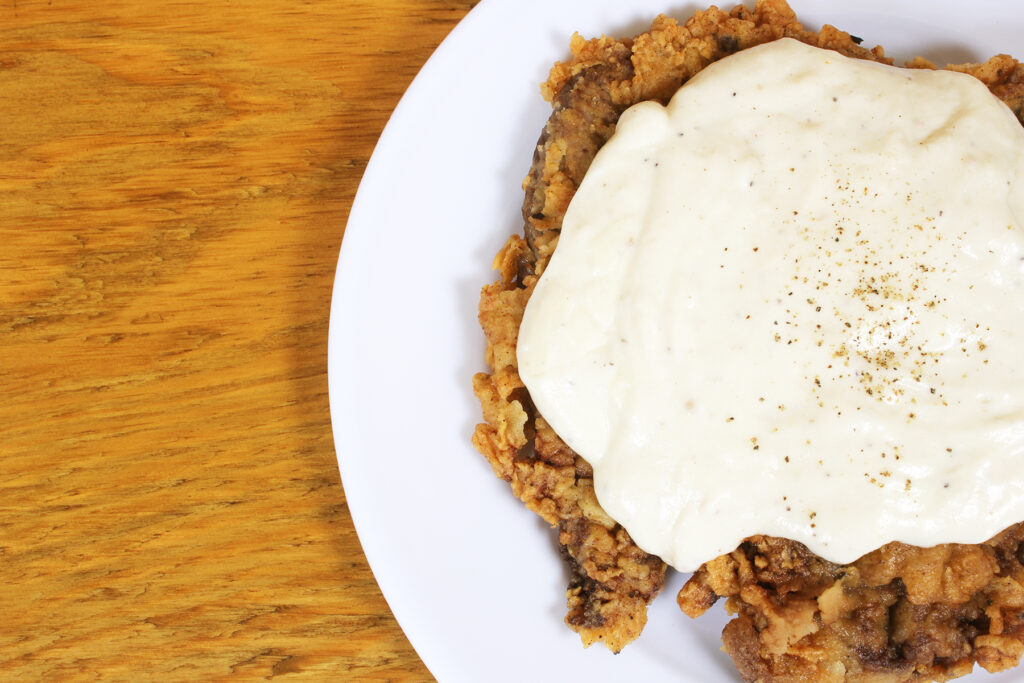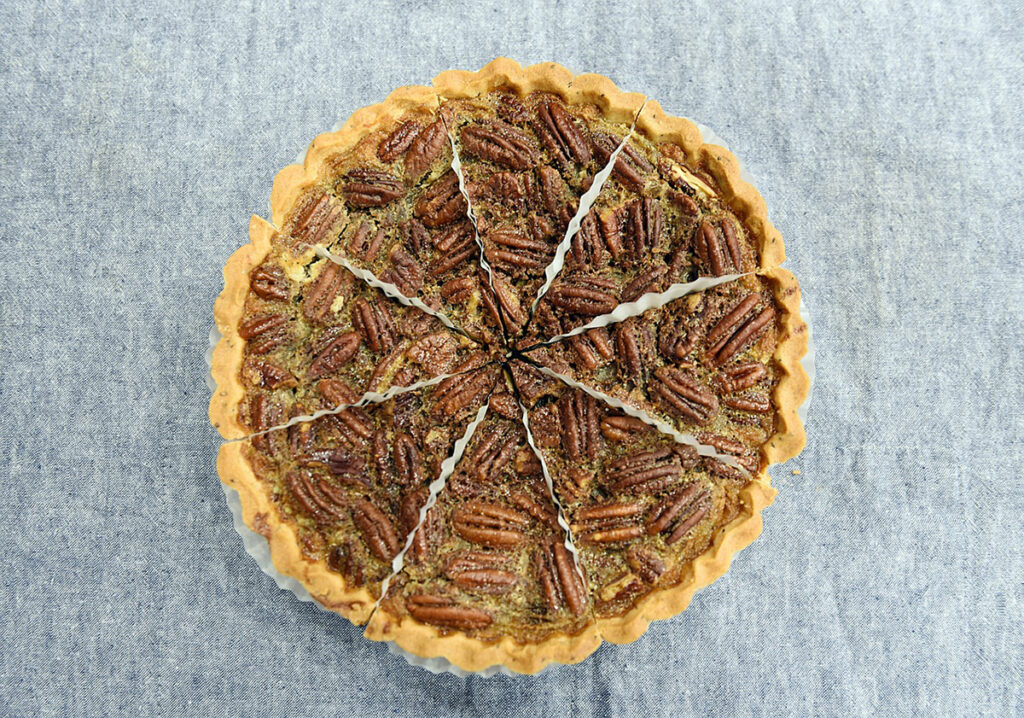The blend of Mexican, Southern, African American, Native American, and European influences has flavored Texas cuisine with just enough sweetness and spice to create a state of devoted and discerning appetites.
Brisket
In the 1800s, Jewish immigrants shared their Passover brisket recipes with Texas cattle ranchers to produce the unique barbecuing method still popular today. Rather than cooking over an open flame or with charcoal, Texans use a spice rub or a marinade and cook the meat “low and slow” in an open pit, using mesquite wood. The meat stays moist and develops its signature smoky, savory flavor. Today, Texas pitmasters still favor brisket for its full flavor and ability to absorb the smoke, but you’ll find ribs, pulled pork, sausage, and chicken on menus, too.
Chicken-Fried Steak

Every October 26, Texans wish each other “Happy chicken-fried steak day!” as they celebrate the date the Texas legislature declared this traditional Texas entrée warranted a celebration. Influenced by the German and Austrian wiener schnitzel, tenderized cube steak is drenched in flour, deep-fried, and served with creamy gravy.
Kolaches
Initially filled with preserves, served as a pastry, and introduced to Texas by Czech immigrants, kolaches have evolved into a hand-held treat filled with just about anything and served in storefronts of their own.
Pecan Pie

Pecans, eggs, butter, corn syrup, and sugar – these simple ingredients have become a Southern favorite, but only Texas can boast that it is our official state dessert. In 1868, the first known pecan pie recipe was submitted by a Texas woman for a St. Louis cookbook. Pecan seeds, dating back to 6000 B.C., were found by archaeologists along the Rio Grande. Today, Texas is the top pecan producer among states with native trees.
Margaritas
Legend has it that the state’s signature drink, made with tequila, Cointreau, and lime juice, was created by a Galveston, Texas bartender and named after the Spanish version of singer Peggy Lee’s name in 1946.
It’s a fact that the frozen margarita machine was invented by a Texan in 1971. A restaurant owner was inspired by a SlurpeeTM machine at a 7-Eleven and began tinkering with an old soft serve ice cream machine to produce big batches of the popular cocktail. The original machine now sits in the Smithsonian National Museum of American History in Washington, D.C.
Migas
Migas comes from the Spanish verb migar, which means ‘to crumble.’ Spanish and Portuguese shepherds created this hearty dish, originally made with stale bread. Migas can also be prepared with tortillas or potatoes. Mixed with jalapeño peppers, garlic, cilantro, eggs, cheese, refried black beans, and toppings, it becomes a hearty breakfast.
Salsa
Teamed up with tortilla chips, the delicious duo was named the official state snack of Texas in 2003.
Salsa, the Spanish word for sauce, is a popular condiment usually made from tomatoes, chopped onions, and peppers, but can also be prepared with other vegetables, fruits, herbs, and spices. It can be served hot or cold, spicy or sweet.
Tamales
This portable meal has been popular since the time of the Mayan and Aztec cultures. Many families share the Christmas tradition of preparing and enjoying tamales together. The mixture of corn dough, called masa, is the basis for the tamale, which is filled with a slow-cooked meat and vegetable filling. They are usually wrapped in dried corn husks or banana leaves and steamed before serving.
Tamales in Texas reflect a deep cultural and culinary connection to Mexico, but they also embrace local Texan ingredients and flavors. Over time, Texan tamales have developed unique variations, incorporating regional spices and ingredients, further embedding the dish into the state’s diverse food culture.
Tamales have become a beloved part of Tex-Mex cuisine, and their association with festive gatherings and family traditions has contributed to their strong presence in Texas food culture.
Tex-Mex
This term refers to the blending of Mexican, Spanish, and Native American cuisine with Texas influences. Traditionally, black beans and yellow cheese, rather than pinto beans and white cheese, indicate the dish is Tex-Mex. Melted cheese and chili peppers form the basis of queso, a popular Tex-Mex appetizer. Before adding grilled meats, vegetables, cumin, chili powder, and cheese, there are a variety of forms flour or corn tortillas can take:
- Burritos – soft, large and rolled up
- Enchiladas – soft and covered with sauce
- Fajitas – soft
- Flautas – crispy and rolled
- Tacos – soft or hard-shells, eaten with your hands, add eggs for breakfast
- Quesadilla – filled, then grilled
Chili
Do not get between a Texan and a bowl of chili and do not try to add beans to the recipe. The International Chili Society sides with Texas and confirms the combination of meats, chili peppers, and spices is officially prepared without beans.
Chili was introduced to the United States in 1860 when a group of women who became known
as the “Chili Queens” started selling chili at a stand in San Antonio’s Military Plaza.
In 1977, chili received the designation of official state dish by the Texas legislature.
